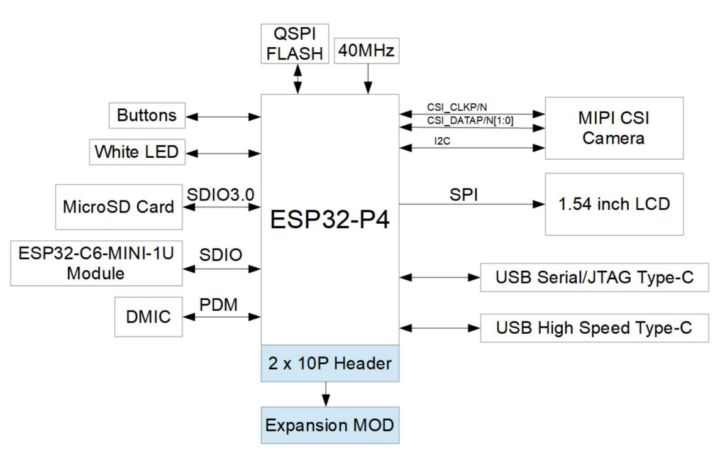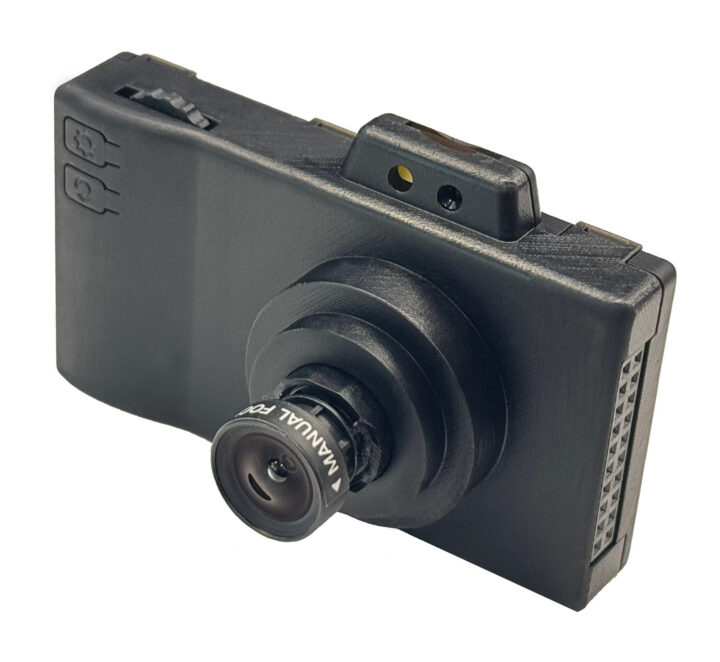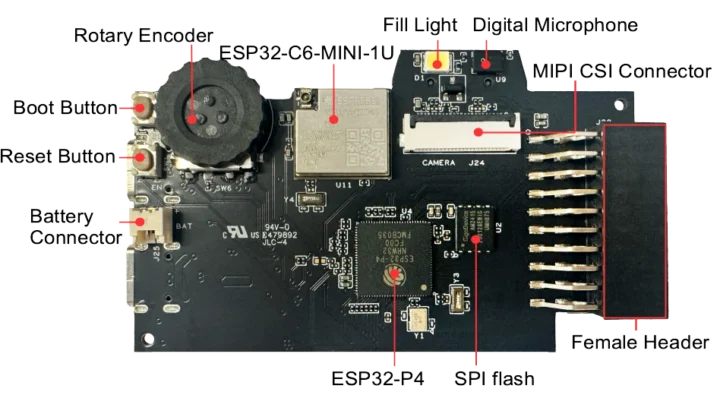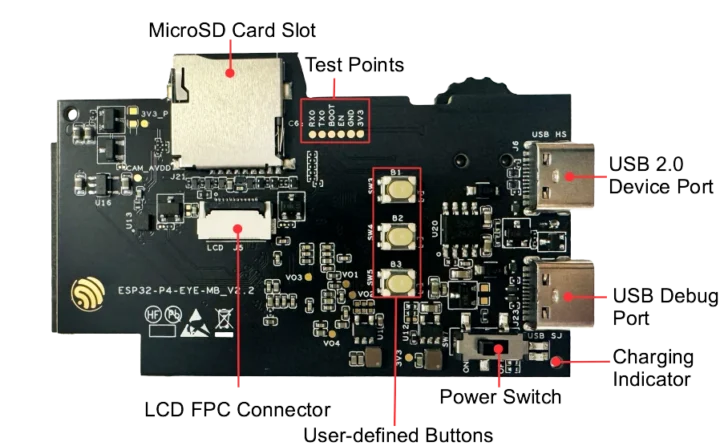Expressif Systems’ ESP32-P4-EYE is a development kit designed for AI vision applications that looks like a standard camera. It combines an ESP32-P4 RISC-V microcontroller with an ESP32-C6 WiFi 6, BLE, and 802.15.4 SoC, and is equipped with a MIPI-CSI camera, a 2MP display, a microphone, and a MicroSD card to store photos or videos.
There’s also a rotatory encoder to control the menu on the LCD or adjust the zoom, a fill/flash light, a few buttons, an LED, and support for either USB or battery power. The company says the ESP32-P4 camera devkit targets smart surveillance, vision-based edge AI, real-time image detection, and audio-visual IoT interfaces.
- Microcontroller – ESP32-P4
- MCU
- Dual-core RISC-V microcontroller @ 400 MHz with AI instructions extension and single-precision FPU
- Single-RISC-V LP (Low-power) MCU core @ up to 40 MHz
- GPU – 2D Pixel Processing Accelerator (PPA)
- VPU – H.264 and JPEG codecs support
- Memory – 768 KB HP L2MEM, 32 KB LP SRAM, 8 KB TCM, 32MB PSRAM
- Storage – 128 KB HP ROM, 16 KB LP ROM
- MCU
- Storage
- 16 MB SPI flash
- MicroSD card slot (4-line SDIO and SPI modes)
- Display – 1.54-inch SPI LCD with 240 x 240 resolution
- Audio – Digital microphone for voice recognition or audio recording.
- Camera – 2 MP MIPI CSI camera with manually adjustable focal length
- Wireless – ESP32-C6-MINI-1U
- SoC – Espressif Systems ESP32-C6 single-core 32-bit RISC-V clocked up to 160 MHz 320KB ROM, 512KB SRAM, low-power RISC-V core @ up to 20 MHz
- CPU
- Single-core 32-bit RISC-V clocked up to 160 MHz
- Low-power RISC-V core @ up to 20 MHz
- Memory/Storage – 320KB ROM, 512KB SRAM
- Wireless – 2.4 GHz WiFi 6, Bluetooth 5.0, and 802.15.4 radio (for Thread/Zigbee)
- CPU
- Storage – 4MB flash (TBC)
- Antenna – External antenna
- SoC – Espressif Systems ESP32-C6 single-core 32-bit RISC-V clocked up to 160 MHz 320KB ROM, 512KB SRAM, low-power RISC-V core @ up to 20 MHz
- USB
- USB-C 2.0 OTG device port
- USB-C debug port
- Expansion – 20-pin female header with GPIO, I2C, 3.3V, GND
- Misc
- Power switch
- Reset and Boot buttons
- 3x User buttons
- Charging LED
- Rotary encoder to control the LCD interface or adjust the camera zoom levels.
- Fill light for image capture and video recording in dark scenes
- Various test points
- Power Supply
- 5V via USB-C port
- Battery connector for Lithium battery
- Dimensions – TBD

The ESP32-P4-EYE devkit requires USB cables for data/power and debugging, an optional microSD card for image/video storage, and a computer running Windows, Linux, or macOS, so in some ways it’s also a webcam.
The documentation website has more technical details such as PDF schematics and PCB layout, and code samples that include a factory sample that demonstrates a mini camera application that supports photo capture, timed photo capture, video recording, album preview, USB SD card mounting, and settings interface with adjustable resolution, saturation, contrast, brightness, and hue.
The ESP32-P4-EYE devkit is relatively inexpensive as it sells for just $35 on AliExpress (There should be an AliExpress link here. If there’s none, it’s your adblocker).

Jean-Luc started CNX Software in 2010 as a part-time endeavor, before quitting his job as a software engineering manager, and starting to write daily news, and reviews full time later in 2011.
Support CNX Software! Donate via cryptocurrencies, become a Patron on Patreon, or purchase goods on Amazon or Aliexpress








